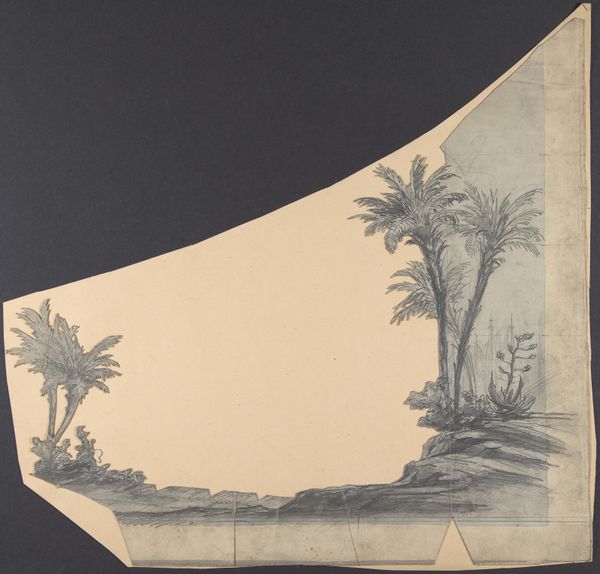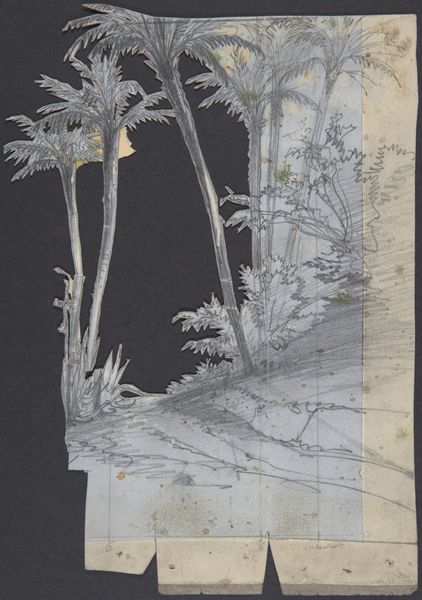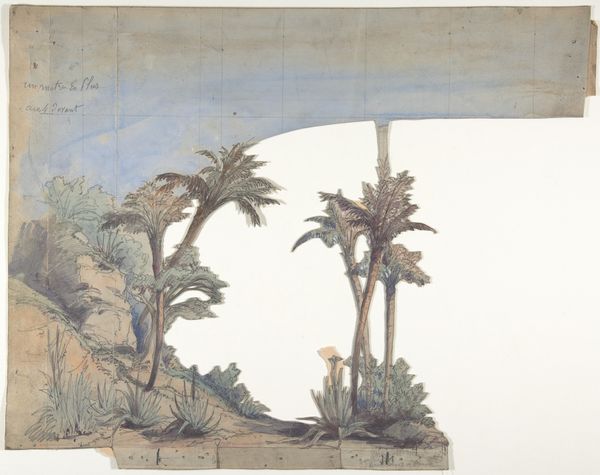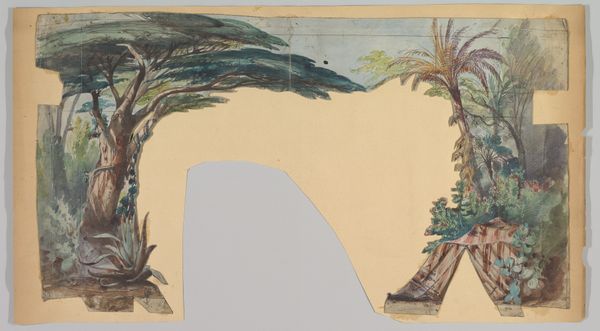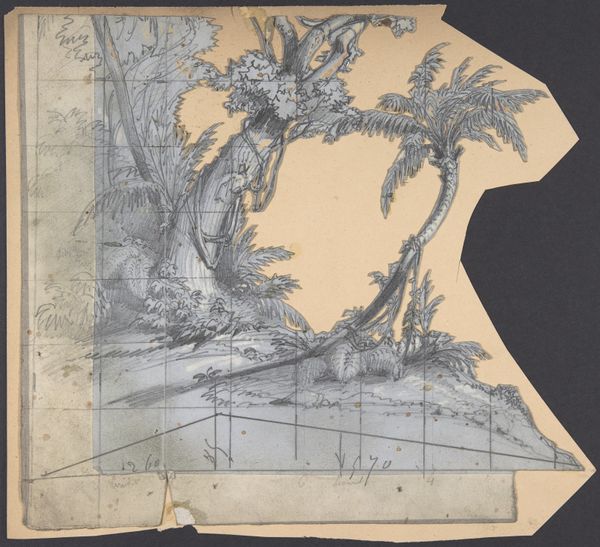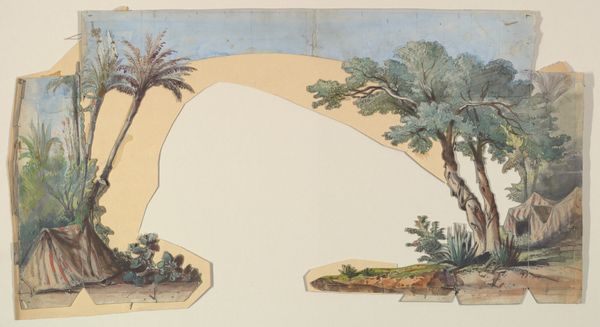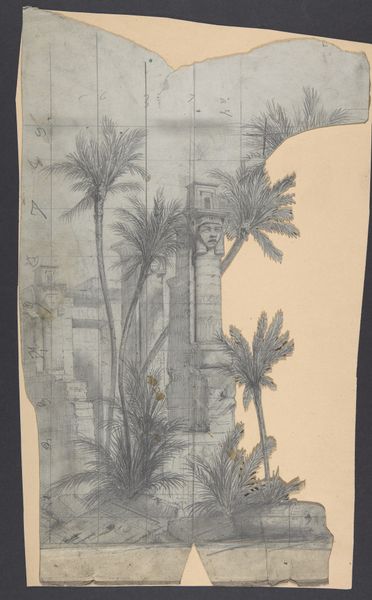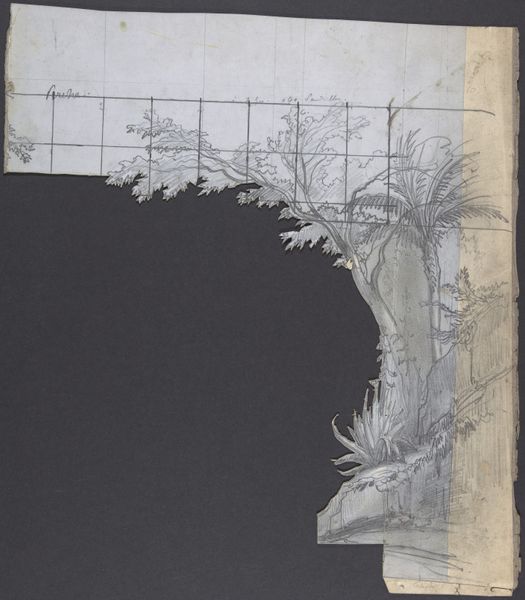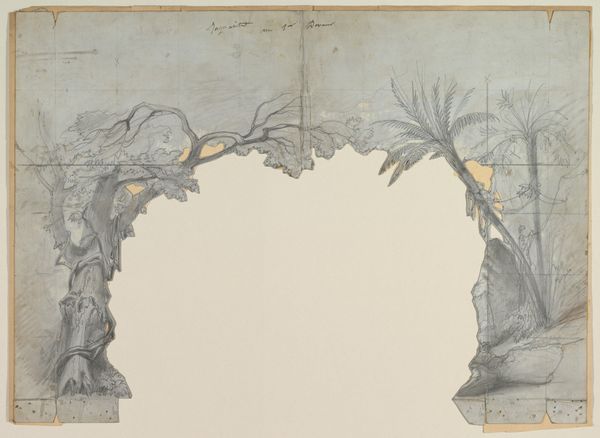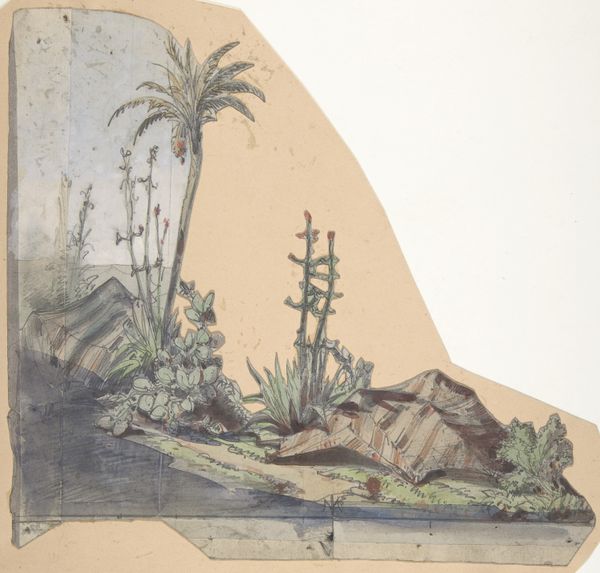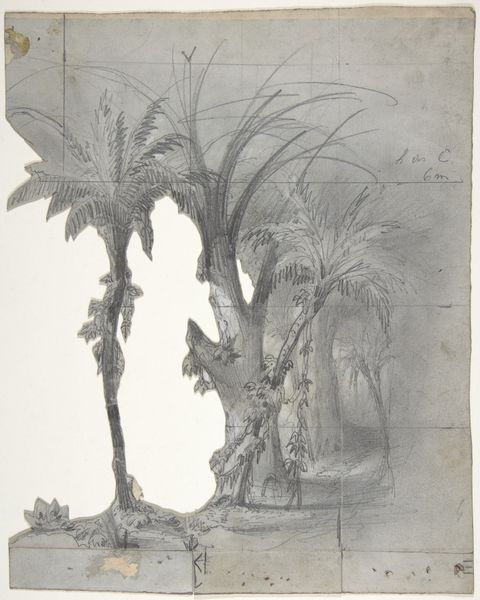
drawing, print, paper, pencil
#
drawing
# print
#
landscape
#
paper
#
coloured pencil
#
geometric
#
pencil
#
line
Copyright: Public Domain
Editor: Here we have Eugène Cicéri's "Design for a Stage Set," created between 1830 and 1890. It's a drawing and print made with pencil and coloured pencil on paper, currently residing at the Metropolitan Museum of Art. It feels incomplete, almost like a forgotten dreamscape. The contrast between the detailed sketches of nature and the empty, coloured space is striking. What draws your eye when you look at it? Curator: The immediate tension resides in the dialectic between representation and void. We see a landscape meticulously rendered with delicate lines, contrasting sharply with the monolithic expanse of muted colour. This juxtaposition demands interrogation. The detailed hatching on the rocks and foliage, balanced by the flat expanse, creates an intriguing spatial ambiguity. How does the line contribute to the structure? Editor: I noticed those lines, especially the grid over the landscape section on the left. It's as though it's been carefully planned and mapped out, yet never fully realised. Curator: Precisely. Cicéri employs line not only to depict form, but also to impose order, to rationalize the organic. Note also how the vertical orientation is dominant. We must consider what this does for the implied viewing position. What might it communicate? Editor: The emphasis on verticality, particularly against the horizontal void, might be aiming to establish some sense of... monumentality, perhaps? Curator: Yes, exactly! The formal elements – line, shape, composition, organization of the space - contribute significantly to its aesthetic meaning and what might appear missing from this 'set'. Editor: Seeing it broken down like that gives me a new appreciation for stage set design and how it directs an audience’s attention. Curator: Indeed. By examining Cicéri's design through formal analysis, we've gleaned valuable insight into the function and effectiveness of landscape renderings for dramatic staging.
Comments
No comments
Be the first to comment and join the conversation on the ultimate creative platform.
